This article is from the WatchTime Archives and was originally published in 2021.
Omega kicked off the year 2021 with a bang by elevating the legendary Moonwatch to Master Chronometer. Although this watch is equipped with the latest movement technology, detailed observations in our test find that its exterior remains true to the design of the cult model.
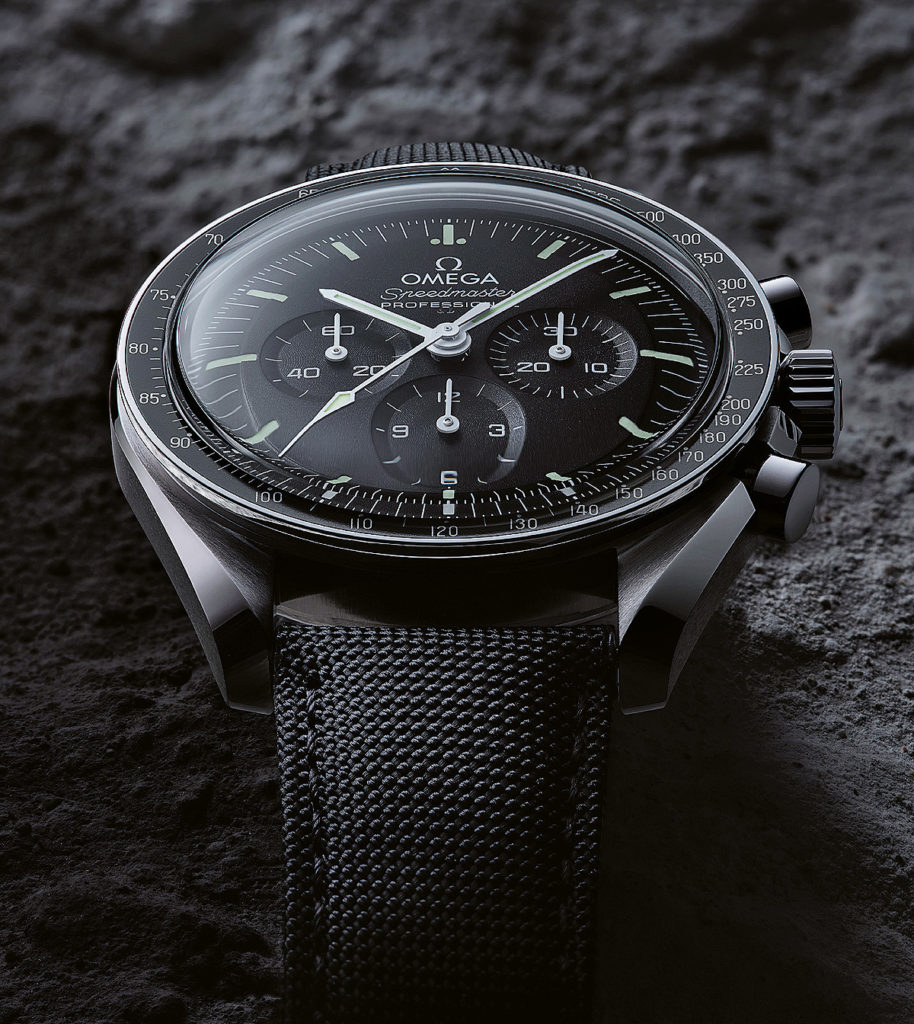
While Omega announced that it wanted to exclude the Moonwatch from the first Master Chronometer certification more than six years ago, the manufacturer now presents the next generation of models. There are a now total of eight new versions in stainless steel and Omega’s proprietary precious metals (Sedna red gold and Canopus white gold), either with a historically inspired Hesalite crystal or a contemporary sapphire crystal, with a closed metal back or a transparent sapphire crystal in the back, attached to a leather, nylon or metal strap, and each with a five-year warranty.
Whichever Moonwatch you choose — a lower-priced model like our test watch with Hesalite crystal, closed back and stainless-steel bracelet for $6,300 or the most expensive version in 18k Canopus white gold for $45,300 — you always wear a piece of authenticity on your wrist. Omega’s President and CEO Raynald Aeschlimann explained, “When you redesign a cult watch like the Speedmaster Moonwatch, every detail must remain true to the original spirit of the timepiece. This chronograph is known around the world, so we approached its design with great respect, while at the same time elevating the movement to the next level of watchmaking.”
Omega plans to certify all of its new watches in 2023 as Master Chronometers. Today, 99.99 percent of its watches already earn this distinction. And Omega accomplishes this with an annual production of between 600,000 and 700,000 watches.
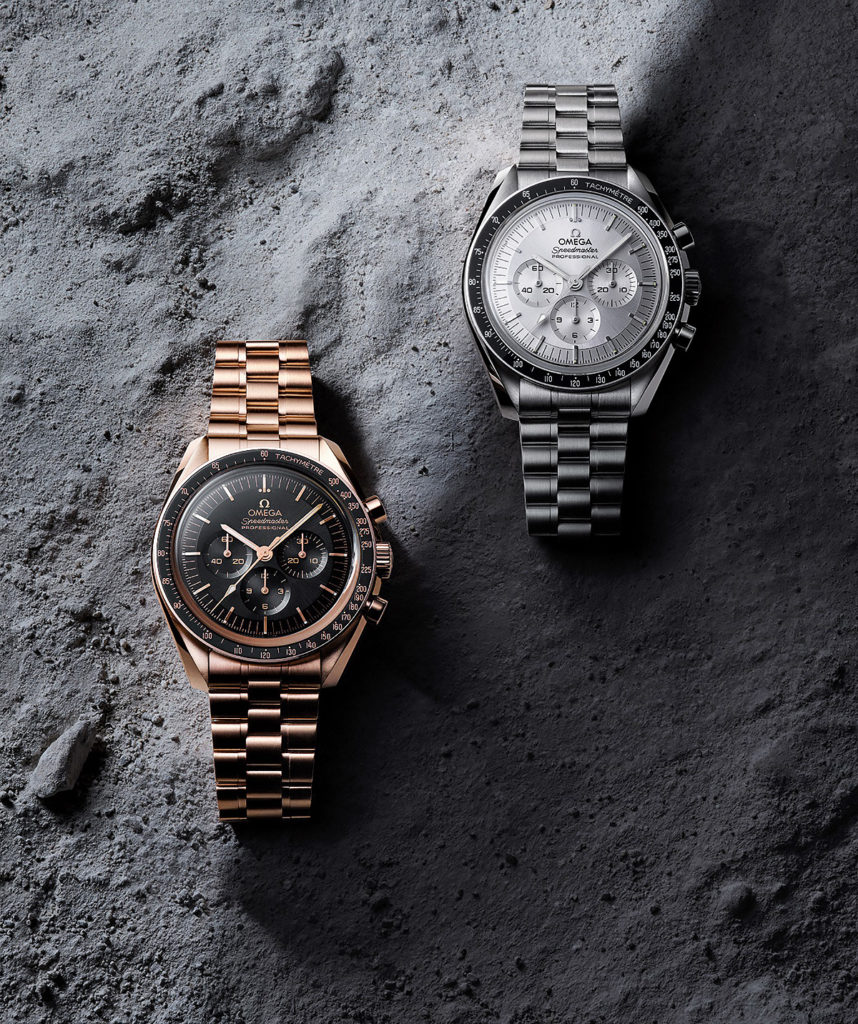
The Moonwatch Master Chronometer Pays Tribute to the Past
Omega definitely shows respect for the past. The current Speedmaster Moonwatch Professional Co-Axial Master Chronometer Chronograph 42 mm, as this timepiece is known by its full name, is inspired by the fourth generation of the Moonwatch, which was worn by the astronauts of the Apollo 11 mission when they flew to the moon in 1969. Insiders often refer to this model as Ref. ST 105.012.
Ref. ST 105.012 and Ref. ST 145.012 have asymmetrical cases because of their crown protectors. This protection was added after NASA saw a danger due to the possibility of inadvertently adjusting the crown and thus the time display. Ref. ST 105.012 and Ref. ST 145.012 are the officially certified models and have had the word “Professional” on their dials since 1966. Before that, this lettering had previously adorned only a few examples of Ref. ST 105.003. Buzz Aldrin is said to have worn an ST 105.012 when he stepped onto the lunar surface, while Michael Collins kept an ST 145.012 strapped to his wrist as he waited inside the capsule.
Be that as it may, our test watch (Ref. 310.30.42.50.01.001) has the same classic asymmetrical case, which provides reliable protection against shocks and accidental operation with the combination of historically correct hat-shaped pushers and a knurled crown on its right side. The crown is quite heavy and difficult to grasp because of its flank protection. And it takes quite a few possibly arduous rotations of the crown to replenish the full 50-hour power reserve of hand-wound Caliber 3861.
Nevertheless, manual winding is a popular ritual among watch enthusiasts, as is evident in increase in the number of hand-wound watches available on the today’s market. If you forget to wind this watch for more than two consecutive days, you’ll also need to manually adjust its hands. But this task is easily accomplished by slipping a fingernail under the crown, and gently lifting it into its outer position. The crown has no middle position because the Moonwatch lacks a date display. Instead, Caliber 3861 provides a stop-seconds function to facilitate accurate time setting. To-the-second setting really makes sense here because this watch runs no less reliably than the phases of the moon. As a Master Chronometer, it deviates from perfect timekeeping by only 1 second per day in all situations — whether fully wound, with its chronograph running or not running, and on or off the wrist. Also noteworthy are the small rate differences among the individual positions and the stable amplitudes, both when the power reserve is decreasing and in each of the several positions.
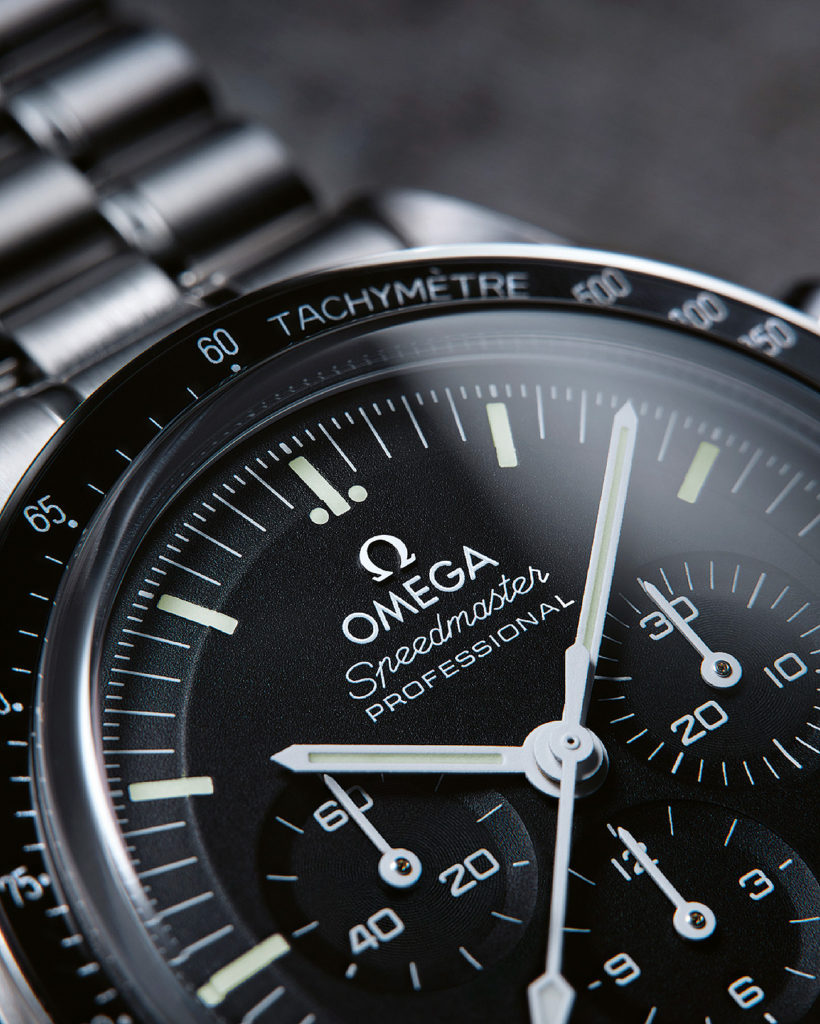
The chronograph’s pushers are pleasant to use, with pressure points that feel surprisingly even and a make a very secure impression both haptically and audibly.
When you start the chronograph, the slender elapsed-seconds hand with its arrow-shaped luminous tip is also set in motion. Six subdivisions per second correctly match the movement’s frequency of 21,600 vibrations per hour. Caliber 3861 was adapted from and is essentially based on the historical Caliber 861. Omega also gets the subdivisions on the stop-seconds scale absolutely right, with two subdividing strokes for three hertz. These tidy strokes are arranged along the outer rim of the so-called “step dial,” which is slightly elevated in the middle, where three subdials are positioned in the classic tricompax arrangement. These details combine to create a harmonious picture with historical authenticity that’s further affirmed by the high curve along the rim of the Hesalite crystal.
Hesalite rather than sapphire for the crystal is the most authentic allusion to the Moonwatch’s heritage, but Hesalite scratches readily, as also became apparent in our wearing test on the wrist. If you don’t like its susceptibility to scratches, you can opt for a sapphire crystal and, in this combination, a second sapphire crystal in the caseback. The double sapphire model then costs you $7,150 with a stainless-steel bracelet or $6,800 with a leather strap.
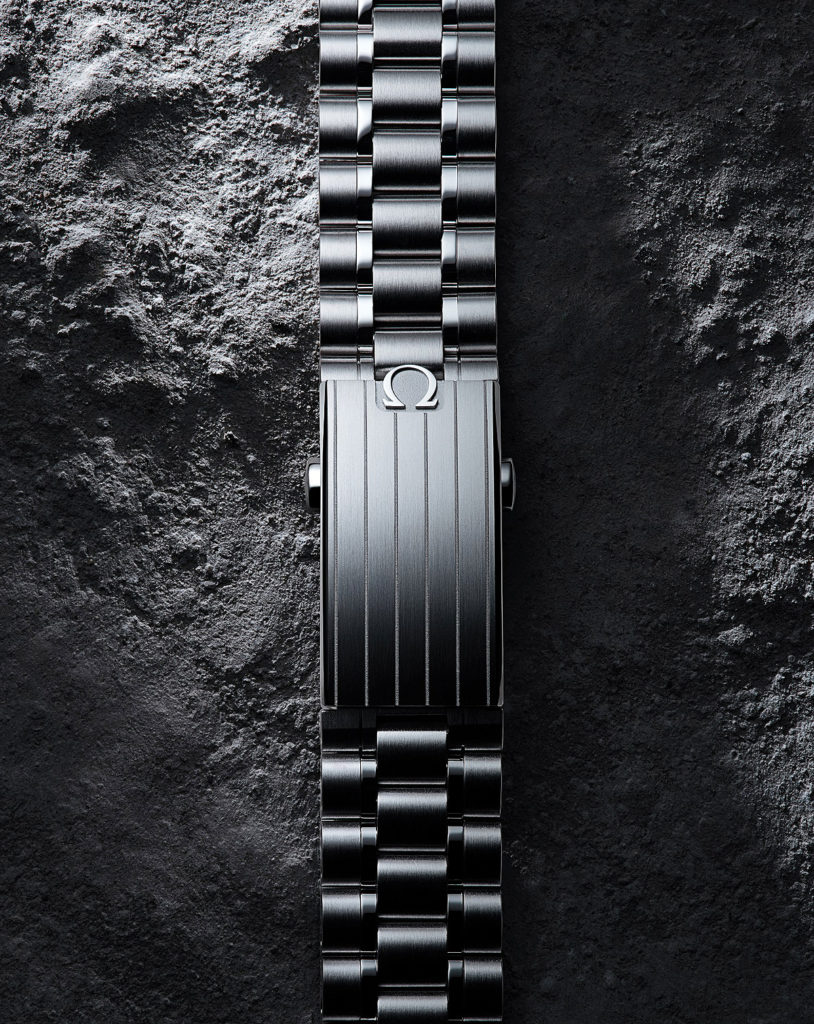
The Master Chronometer Caliber Refers to the Historical Movement
In keeping with its ancestor, the double beveled screw-in back is closed on our test watch with a Hesalite crystal above the dial. Various engravings and inscriptions refer to historical events as well as to the inner workings of Caliber 3861.
Omega worked for more than four years on this caliber, which premiered in spring 2019. The starting point for its development was Caliber 861, which had been built since 1968 on the basis of Lemania’s Caliber 1873. This mechanical chronograph had a frequency of 21,600 vibrations per hour and included counters for 30 elapsed minutes and 12 elapsed hours, cam switching and horizontal gear coupling. In addition to all these features, Caliber 3861 also preserved Caliber 861’s dimensions of 27 mm in diameter and 6.87 mm in height.
The primary goal of the further development was to achieve certification as a Master Chronometer. This prompted the designers to equip the caliber with a stop-seconds mechanism and enhanced protection against magnetic fields up to an intensity of 15,000 gauss. In addition, thanks to modern manufacturing techniques, the gears were given new profiles in order to mesh more deeply and run more smoothly. Needless to say, the new caliber features Omega’s own Co-axial escapement, which was introduced in 1999. As an important prerequisite for earning Master Chronometer certification, this escapement is equipped with a silicon hairspring, which, among other things, guarantees protection against magnetic fields up to a strength of 15,000 gauss, which is required for the certification. Last but not least, the caliber’s modernization was accompanied by the extension of the power reserve from 38 hours to a contemporary 50 hours.
Individual Details Continue to Write the History of the Moonwatch
The Moonwatch comes with a new stainless-steel bracelet. With its fixed connectors, it is an example of the currently popular integrated case-and-band composition. The five-row bracelet, in which the parts are screwed together and become considerably narrower toward the clasp, is completely brushed in our Hesalite crystal version.
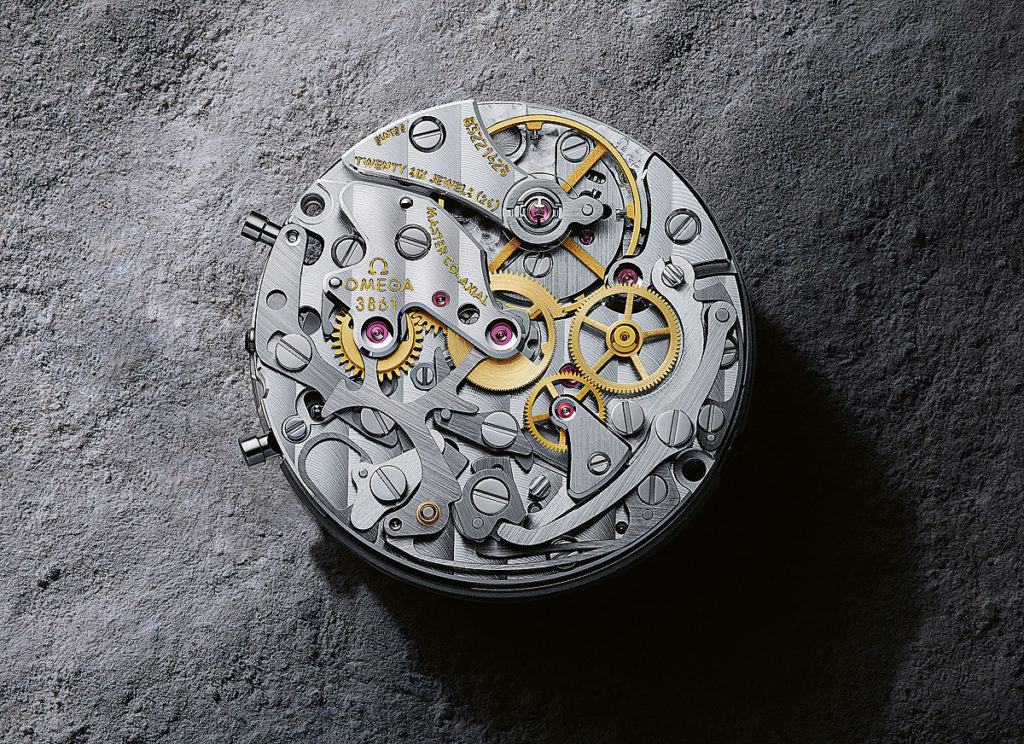
The one-sided deployant clasp with polished Omega logo is also satin finished and is designed to be reminiscent of earlier Moonwatch models. A small but quite important detail for enthusiasts and collectors is the “dot over 90,” the point about the 90 that was on the side of the dial in some previous models as well as the dot at the 70, which is now diagonally below the 70 on the anodized aluminum bezel. These model-defining details continue to write history with the legendary Moonwatch, even if they are, quite rightly, ticking with a modern movement.
SPECS:
Manufacturer: Omega S.A., Stämpflistrasse 96, 2504 Bienne, Switzerland
Reference number: 310.30.42.50.01.001
Functions: Hours, minutes, subdial for the seconds, chronograph (central elapsed-seconds hand, counters for 30 elapsed minutes and 12 elapsed hours), tachymeter calibrations
Movement: Omega 3861, hand-wound, COSC and METAS certified, 21,600 vph , 26 jewels, Glucydur balance, Silicon Si 14 hairspring, adjustment via 4 micro-regulating screws, Nivachoc shock absorption, 50-hour power reserve, diameter = 27 mm, height = 6.87 mm
Case: Stainless-steel case, Hesalite crystal, water resistant to 50 m
Bracelet and clasp: Stainless-steel bracelet, one-sided deployant clasp with pusher
Rate results (Deviation in seconds per 24 hours (fully wound/after 24 hours):
On the wrist +1.1
Dial up +1.8/+3.2
Dial down +0.5/+1.3
Crown up +1.3/+1.8
Crown down 0.0/−0.2
Crown left +2.6/+2.0
Greatest deviation 2.6/3.4
Average deviation +1.2/+1.6
Average amplitude:
Flat positions 311°/294°
Hanging positions 305°/297°
Dimensions: Diameter = 42.62 mm, lug width = 20 mm, height = 13.92 mm, weight = 138 g
Variations: With sapphire front and back (Ref. 310.30.42.50.01.002, $7,150); on leather strap (Ref. 310.32.42.50.001, $6,800); on nylon band (Ref. 310.32.42.50.01.001, $5,950); Sedna gold (Ref. 310.60.42.50.01.001, $34,800); in Canopus gold (Ref. 310.60.42.50.02.001, $45,300)
Price: $6,300
SCORES:
Bracelet and clasp (max. 10 points): New stainless-steel bracelet with historically inspired, functional folding clasp; screwed components toward the clasp. 8
Case (10): Asymmetrical, historically inspired case; Hesalite crystal is very susceptible to scratches; a sapphire crystal alternative is available; closed back. 8
Dial and hands (10): Design also inspired by history; neat and accurate scales, appropriate hands. 8
Design (15): The Moonwatch is a style icon; changes were made only with great care; bezel with historical details; high recognition value. 15
Legibility (5): The time is conveniently legible both day and night; hands have appropri-ately long lengths; correct elapsed-seconds scaling; no date display. 4
Operation (5): The crown is a bit difficult to operate; the pushers have very even pressure points. 4
Wearing comfort (5): Pleasant proportions; comfortable case/strap construction. 4
Movement (20): Modern caliber (COSC, METAS certified) with historical details, such as manual winding, a column wheel and the frequency of the balance. 19
Rate results (10): Very good rate behavior in all situations; small differences in rate and amplitude among the several positions 10
Overall value (10): This Moonwatch is a successfully modernized legend with a good price-performance ratio compared to similar watches. 9
Total: 89 POINTS



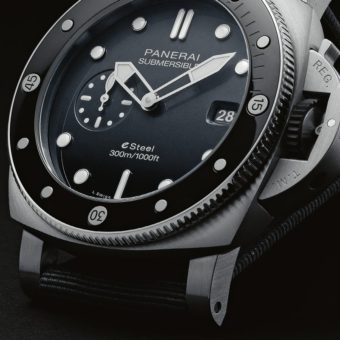

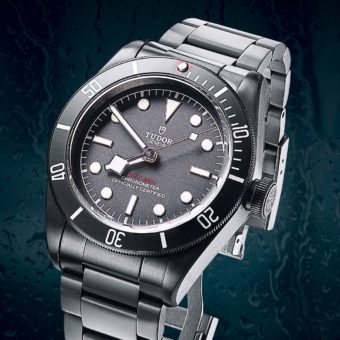

Just two comments. The “historical caliber 861”. I do not know why this caliber is historical except for the fact that it made the switch from Column wheel to Switching cams, a less expensive construction. The real historical caliber was the 321 because this was the caliber NASA tested and qualified for the Moon Landings, and it was beating at 18000 vph, not 21600 as the 861. Caliber 861 was not qualified by NASA until the mid 1970s. Second comment is that in the movement description, the description mentions a column wheel when this movement do not have a column wheel at all, and historical frequency. The 321 caliber Moonwatch had an 18000 vph, while the precursor of the 3861 was 21600, so to which history this refers to? But in general, this is an excellent article about maybe the best and most Historical Chrono in the world, (and I used to have 19 of them and three 6265 Daytonas that never compared to the Omegas), so I know what I am talking about……..
Also the Sapphire and the Hesalite glass are not interchangeable…
I’ve had the Hesalite before and as “authentic” as it is, unfortunately it scratches very easily and loses the “new” feeling very quickly. Even after polishing there are swirl marks which will annoy you later on…
I have the new Sapphire Sandwich and can say it is super accuarate and very well built….
My only criticism is that in a sea of Rolexes and Grand Seiko’s in my collection it does not look special and has not made the transition from tool watch to luxury watch…
Nice review… but column wheel? Please.. :)
Loved reading your article on testing the Omega Moonwatch professional.
I purchased the example with the plastic domed crystal. Could I have Omega replace it, to a sapphire crystal. Thanks
Please make this watch in 38 1/2 mm with a date embedded at 6 o’clock and a sweep second hand that hacks. You can call it reduced (mine is 12 years old) or junior, I don’t care. Thank you.
I have this watch with the sapphire crystal. After 1 year of tracking it I am getting exactly +1.1 sec/day. Can not ask for any better timekeeping especially in the $7,500 price range.
“When you redesign a cult watch like the Speedmaster Moonwatch, every detail must remain true to the original spirit of the timepiece…. how can you say that when the case is gold or face is silver/white? The Speedmaster must look like a Speedmaster not just ape it.
Nice detailed review.
One point of difference with WatchTime reviews compared to other watch media is the depth of detail and the scoring system.
Well done!
I only have one small request with regards to dimensions – would it be possible to include the lug-to-lug (case length) in future?
With this, you pretty much have the perfect review.
Thanks.
Have the Hesalite w/ metal back, because it’s more authentic. Wish it had a date.
The movement’s chronograph does NOT contain a column wheel. Also, the frequency of the Cal. 3861 was reduced from the previous 1861.